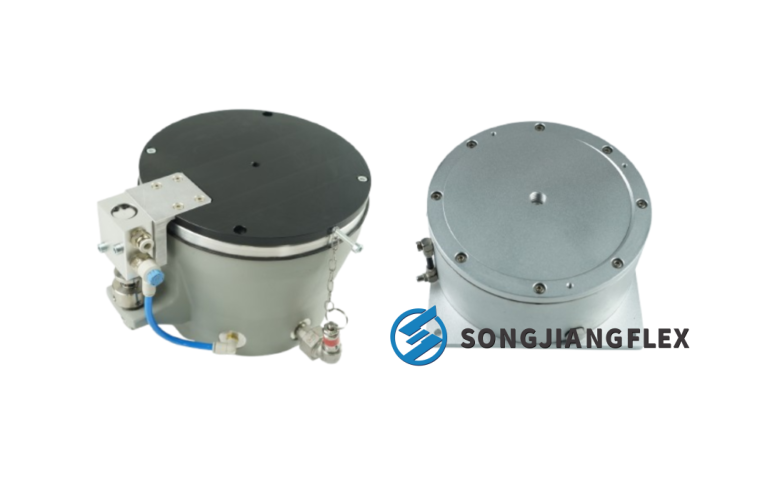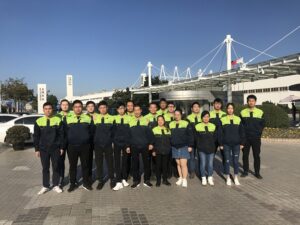How Do Air Springs Enhance Precision in the Vibration Isolation Design of the SWA200 Wafer Alignment System?
Wafer alignment systems are highly sensitive to vibration, which causes precision loss. Traditional isolation methods are limited; air springs provide an ideal solution for vibration control with their adjustable damping and high durability.
The SWA200 wafer alignment system uses air springs for effective vibration isolation, enabling pressure adjustment to adapt to load variations and suppress sub-micron vibrations. Compared to conventional springs and rubber isolators, air springs offer more stable and controllable isolation performance, crucial for semiconductor manufacturing precision.
Let’s explore the critical design features and advantages of air springs in the SWA200 system and understand why they are essential in modern semiconductor equipment.
1. Why Does the SWA200 Wafer Alignment System Require High-Precision Vibration Isolation?
Vibration severely impacts the precision of the SWA200 wafer alignment system. Traditional isolation methods like coil springs or rubber mounts struggle with micro-vibrations and dynamic disturbances. Given the strict vibration requirements in semiconductor manufacturing, vibration isolation technology has evolved to prioritize air springs due to their superior damping and adaptability.
Traditional isolation methods cannot adequately manage low-frequency vibrations and transient dynamic forces, which are critical in semiconductor processes. The air spring’s ability to isolate vibrations on the sub-micron scale ensures consistent wafer placement and alignment accuracy, which directly affects yield and production quality.
2. What Type of Air Springs and Structural Features Does the SWA200 Use?
The SWA200 employs closed-cell rubber air springs combined with aluminum cover plates. These air springs use high hysteresis rubber and neoprene rubber materials, offering excellent sealing, low stiffness response, and high durability. Compared to metal springs and conventional rubber isolators, air springs provide enhanced vibration control with longer lifespan and better adaptability.
The combination of rubber and aluminum materials in the air spring construction ensures corrosion resistance and mechanical robustness, essential for maintaining performance in cleanroom semiconductor environments.
3. How Do Air Springs Achieve Sub-Micron Vibration Suppression and Precision Control?
Air springs allow precise tuning of stiffness and damping by adjusting the internal air pressure. This dynamic adaptability matches the device’s operating frequencies and load variations, ensuring optimal vibration isolation. Furthermore, air springs are compatible with active vibration isolation systems, enhancing overall performance beyond passive solutions.
This pressure-adjustable damping is key to maintaining the wafer alignment system’s operational stability, minimizing positional errors that could otherwise affect semiconductor yield.
4. What Are Other Typical Applications of Air Springs in the Semiconductor Industry?
Beyond the SWA200, air springs are widely used in photolithography machines, inspection stations, and wafer transfer systems. The trend towards customized rubber air springs and rubber air isolators continues to grow, meeting the increasing demands for vibration control and cleanroom compatibility in semiconductor fabrication.
These applications benefit from air springs’ ability to maintain precise vibration isolation over varying load conditions and harsh manufacturing environments.
5. How Are Air Springs Maintained and Their Lifespan Ensured?
Materials like neoprene and chloroprene rubber, combined with factory automation in production, ensure consistent quality and durability. Routine maintenance includes inspection for leaks and wear. Advanced monitoring technologies enable early fault detection, helping maintain long-term stable performance in critical equipment.
Maintenance protocols focus on pressure regulation, surface integrity, and performance monitoring to extend the service life of air springs in semiconductor systems.
6. How Do Load Variations Affect Air Spring Performance and How Are They Adjusted?
Changes in load impact vibration isolation effectiveness. Air pressure adjustment technology and intelligent control systems allow real-time tuning of air spring stiffness, maintaining consistent isolation performance. The SWA200 system exemplifies such dynamic adjustment, optimizing stability during operation.
This adaptability is especially important in processes where wafer weight or supporting structure varies during different operational stages.
7. How Do Air Springs Perform Under Extreme Environmental Conditions?
Air springs exhibit excellent resistance to temperature extremes, humidity, and chemical corrosion, especially when made from materials like chloroprene and amino silicone rubber. Testing and customer feedback confirm reliable performance even in harsh semiconductor manufacturing environments.
Their chemical resistance also prevents degradation caused by cleanroom chemicals or gases, ensuring reliable long-term operation.
8. What Is the Future Trend of Air Spring Technology in Semiconductor Equipment?
Air spring systems are evolving towards greater intelligence and integration with IoT for real-time vibration monitoring. Innovations in materials and design promise further improvements in isolation efficiency. These advancements will support next-generation semiconductor equipment requiring ultra-precise vibration control.
Integration with active vibration isolation and predictive maintenance tools is expected to enhance operational uptime and product quality.
Air springs enable the SWA200 wafer alignment system to achieve superior vibration isolation and precise control, making them an ideal choice for advanced semiconductor manufacturing equipment. Their design advantages provide unmatched stability and precision, critical for today’s highly sensitive wafer alignment processes.






